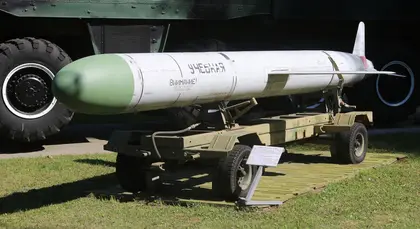On April 28 and again on May 1, the Russian military conducted large-scale attacks on cities in Ukraine using Kh-101 and Kh-555 air-launched cruise missiles. These missiles have been previously used to terrorize Syria and are launched from Tu-95 and Tu-160 strategic bombers.
However, according to numerous military experts, despite their capability of flying thousands of kilometers and being difficult to intercept by air defense systems, they cannot be considered “ultimate weapons” due to the outdated electronic database and the reliance on old Soviet-era technology.
- Get the newest Ukraine news reports as of today.
- Russian Losses in Ukraine War
JOIN US ON TELEGRAM
Follow our coverage of the war on the @Kyivpost_official.
The Kh-55 Cruise Missile - A Soviet-era Weapon, the predecessor of the Kh-555
The Kh-555 cruise missile was created as a non-nuclear version of its predecessor, the Kh-55 missile, developed in the 1970s and 1980s. The Kh-55 was developed as a response to the American AGM-86 and copied the concept of air defense breakthrough with low-altitude flight and its own low observability to radar.
Although it shared similarities with its American counterpart, the Kh-55 could not surpass its competitor, especially in accuracy. While American cruise missiles have a proven accuracy of several meters, the Kh-55 could only manage up to 100 meters.
Eventually, the Kh-55SM modernized missile was developed with an increased range from 2500 km to 3500 km by installing additional conformal tanks on the sides of the missile. The cruise missile's flight range was made possible by the R95-300 engine from the then-Soviet-now-Ukrainian manufacturer Motor Sich.

Trump Makes 90 Day Foreign Aid Freeze – Ukraine Military Support Supposedly Untouched
The Kh-555 missile
In the 1990s, the Kh-555 missile was created based on the Kh-55SM. Unlike its predecessor, the Kh-555 had a conventional warhead and a modernized guidance system. The missile’s development continued until the mid-2000s.
One of the challenges was designing an effective high-explosive or cluster warhead. It turned out to be heavier than a nuclear munition. The increase in weight and size led to a decrease in the missile’s range, which fell to around 2000 km.
The second challenge was the missile's guidance system. In addition to inertial navigation, a Tercom system with radio and optical channels, as well as satellite navigation, was added. However, a significant part of the electronic “stuffing” remained on the technological base of the 1960s and 1970s, as indicated by the surviving blocks of downed cruise missiles.
The Raduga Design Bureau, the missile’s developer, does not publish the cruise missile’s declared characteristics regarding the warhead and flight range. Therefore, information regarding these specifications relies on different statements made at different times.
Length: 6.04 m
Wingspan: 3.1 m
Starting weight: 1500 kg
Warhead weight: 200-410 kg
Flight range: 2000-2500 km
Speed: up to 830 km/h
Kh-555 carriers: Tu-95, Tu-160
Сan Ukraine's air defense shoot down this missile?
Ukraine's air defense faces a daunting challenge in intercepting the Kh-555 missile – it was specifically designed with a reduced radar cross-section and it flies at high subsonic speeds (about the same as a cruising airliner) and extremely low altitudes (under 100 meters) while hugging the terrain.
The missile aims to strike strategically important stationary ground targets with pre-determined coordinates.
Given the missile’s ability to fly to pre-planned coordinates, it is reasonable to assume that Russia is employing the Kh-555 as a tool of intimidation against the Ukrainian populace.
You can also highlight the text and press Ctrl + Enter










